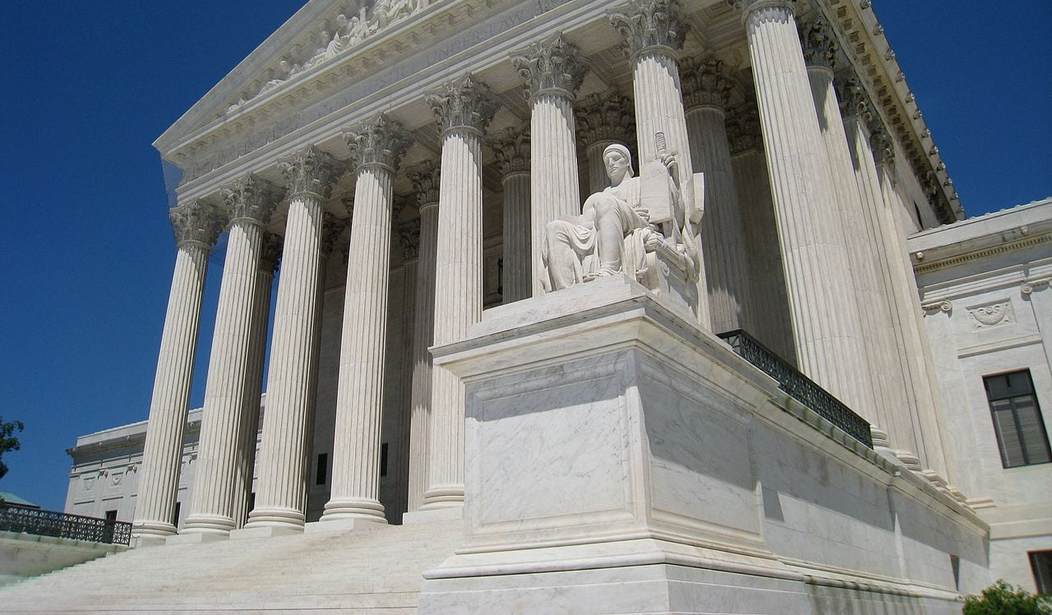On Friday night, about nine hours after the Ninth Circuit Court of Appeals refused to grant an injunction allowing in-home prayer meetings, the Supreme Court stepped in, suspending Gov. Gavin Newsom’s (D-Calif.) COVID-19 restriction. While California changed the restrictions shortly after the plaintiffs filed the lawsuit, they would have remained in place until April 15.
“Applicants are likely to succeed on the merits of their free exercise claim; they are irreparably harmed by the loss of free exercise rights ‘for even minimal periods of time’; andthe State has not shown that ‘public health would be imperiled’ by employing less restrictive measures,” the Supreme Court ruled. “Accordingly, applicants are entitled to an injunction pending appeal.”
This marked the fifth time the Court “has summarily rejected the Ninth Circuit’s analysis of California’s COVID restrictions on religious exercise,” the Court noted. “California’s Blueprint System contains myriad exceptions and accommodations for comparable activities, thus requiring the application of strict scrutiny.”
While the Court issued an unsigned “Per Curiam” decision, four justices dissented: Chief Justice John Roberts and Justices Elena Kagan, Sonia Sotomayor, and Stephen Breyer. Roberts said he would not grant the injunction, while Kagan wrote a dissent, with which Sotomayor and Breyer joined. In other words, former President Donald Trump’s conservative Supreme Court majority saved these in-home gatherings from the leftist justices, along with Roberts.
The Court ruled that “the Ninth Circuit’s failure to grant an injunction pending appeal was erroneous.” The justices went on to lay out four key points on religious freedom.
Democrats Are a Threat to the Constitution in the 2020 Elections
“First, government regulations are not neutral and generally applicable, and therefore trigger strict scrutiny under the Free Exercise Clause, whenever they treat any comparable secular activity more favorably than religious exercise,” the Court argued, citing Roman Catholic Diocese of Brooklyn v. Cuomo (2020).
“Second, whether two activities are comparable for purposes of the Free Exercise Clause must be judged against the asserted government interest that justifies the regulation at issue,” the Court added. “Comparability is concerned with the risks various activities pose, not the reasons why people gather.”
“Third, the government has the burden to establish that the challenged law satisfies strict scrutiny. To do so in this context, it must do more than assert that certain risk factors ‘are always present in worship, or always absent from the other secular activities’ the government may allow,” the Court ruled. “Instead, narrow tailoring requires the government to show that measures less restrictive of the First Amendment activity could not address its interest in reducing the spread of COVID.”
Finally, “even if the government withdraws or modifies a COVID restriction in the course of litigation, that does not necessarily moot the case. And so long as a case is not moot, litigants otherwise entitled to emergency injunctive relief remain entitled to such relief where the applicants ‘remain under a constant threat’ that government officials will use their power to reinstate the challenged restrictions.”
The Court applied these principles to the case at hand.
First, California treats some comparable secular activities more favorably than at-home religious exercise, permitting hair salons, retail stores, personal care services, movie theaters, private suites at sporting events and concerts, and indoor restaurants to bring together more than three households at a time. Second, the Ninth Circuit did not conclude that those activities pose a lesser risk of transmission than applicants’ proposed religious exercise at home. The Ninth Circuit erroneously rejected these comparators simply because this Court’s previous decisions involved public buildings as opposed to private buildings. Third, instead of requiring the State to explain why it could not safely permit at-home worshipers to gather in larger numbers while using precautions used in secular activities, the Ninth Circuit erroneously declared that such measures might not “translate readily” to the home. The State cannot “assume the worst when people go to worship but assume the best when people go to work.” And fourth, although California officials changed the challenged policy shortly after this application was filed, the previous restrictions remain in place until April 15th, and officials with a track record of “moving the goalposts” retain authority to reinstate those heightened restrictions at any time.
Yet Kagan argued that California applies the same limits to all in-home gatherings, not just prayer meetings.
“California limits religious gatherings in homes to three households. If the State also limits all secular gatherings in homes to three households, it has complied with the First Amendment. And the State does exactly that: It has adopted a blanket restriction on at- home gatherings of all kinds, religious and secular alike,” she argued. “California need not, as the per curiam insists, treat at-home religious gatherings the same as hardware stores and hair salons—and thus unlike at-home secular gatherings, the obvious comparator here.”
Yet Kagan did not address the elephant in the room: if Newsom was confident that his COVID-19 ban on in-home prayer meetings did not violate the First Amendment, then why did he agree to shorten the ban, allowing it to lapse on April 15?
Supreme Court Won’t Let a College off the Hook for Suppressing Free Speech
The Court drew a line in the sand: Newsom cannot use COVID-19 to ban religious gatherings in homes. He also cannot drop the issue by “moving the goalposts.”
Thanks to this important decision, Californians can meet to pray in homes. The Court has defended religious freedom. Yet President Joe Biden holds a sword of Damocles over the Court, threatening to pack it with leftist justices. He may condemn this decision and use the Court’s defense of religious freedom as an excuse to destroy it.









Join the conversation as a VIP Member